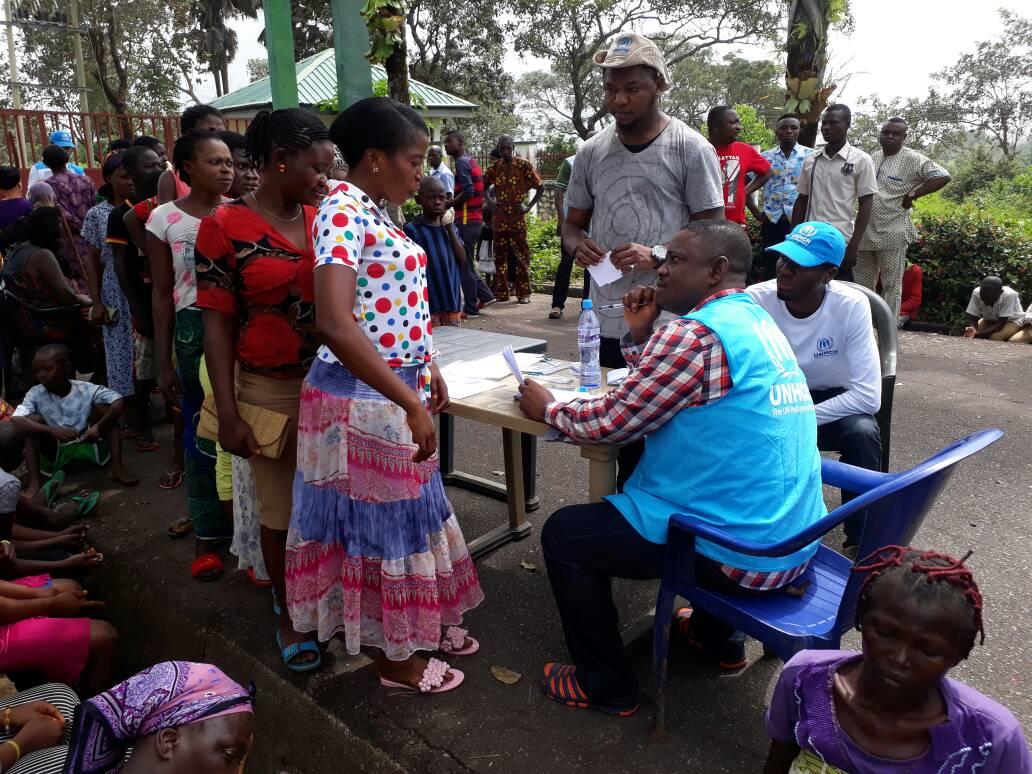Lubbers hails returns to Angola; urges more reconstruction
Lubbers hails returns to Angola; urges more reconstruction

CAZOMBO, Angola, August 25 (UNHCR) - UN refugee agency chief Ruud Lubbers has ended his mission to Africa by hailing the achievements of the Angolan repatriation programme while making a strong appeal for more reconstruction in the country's heavily-damaged interior.
On the last leg of his journey to Angola and the Democratic Republic of the Congo (DRC) on Saturday, the High Commissioner visited rural returnee areas in the east of Angola, where he witnessed the arrival of a returnee convoy from the DRC amid cheers and dances by the local community.
In Cazombo, the main county town of Moxico province, he was welcomed by the municipality's administrator, who told him, "At the beginning of last year this municipality was counting 2,000 souls. As of today there are 70,000 people living here."
The rapid population expansion in this town is a prime example of how Angolans displaced by the 27-year civil war have been anxious to return to their home areas and rebuild their lives. Although most of the recent returnees were people who had fled to other parts of Angola, the population of Cazombo also included over 5,000 refugees who had recently returned from Zambia on UNHCR convoys, and another 5,000 who had returned on their own.
The Cazombo official outlined important efforts made by the local administration, as well as local and international aid agencies in his district, to reconstruct health centres, rehabilitate water systems and infrastructure, and take care of particularly vulnerable people among those who return: separated children, female-headed families and handicapped people.
High Commissioner Lubbers assured all present that he had pleaded with the central government to do more for rural areas. "I made a plea to the authorities in Luanda to speed up the rehabilitation of infrastructure in these remote areas, which are far away from the capital, so that more people can return home," he said.
So far, UNHCR has had to restrict organised returns to so-called "open municipalities" that have been cleared of mines and offer basic services - water, health, schooling and the presence of local administration - for the returning population. Even so, it is not a rare sight to spot bright red signs warning of land mine danger nearby.
To get a better sense of the repatriation programme, Lubbers followed the steps of many returnee families who crossed the Zambezi river to return to their villages around Cazombo. On board a motorised canoe, he observed the number of bridges destroyed by the war, and greeted dozens of cheering families on the other side.
The rest of Saturday was spent in Luau, a small commune near the Dilolo border that separates Angola's Moxico province from the DRC. There was an atmosphere of joy as a convoy of returnees from refugee camps just across the border pulled into the small town. As is the habit when the twice-weekly convoy arrives in Luau, families who had recently resettled here gathered behind a wooden fence on the side of the road, hoping to catch sight of a friend or relative left behind in the camp, or lost for years in the midst of the brutal civil war.
The returnees alighted in front of the reception centre and were taken through the arrival procedure as bundles of goods and chicken in small makeshift wooden cages were piled up near the entrance. The last trucks to arrive overflowed with bicycles, furniture and goats - possessions accumulated during decades of exile.
The High Commissioner watched as the returnees were formally registered in order to qualify for an assistance package. They received food and essential domestic items like blankets, plastic sheeting, buckets, kitchen utensils and some tools to build a shelter. Babies were fitted with colour-coded armbands to show their level of malnutrition.
After registration, families were shown to their temporary shelter for the next few days, until UNHCR transports them back into their villages.
"What I have seen here is very convincing," said Lubbers at the end of the day. He added that he was "pleased with the achievements to date and impressed by the co-operation between UNHCR, authorities, other UN agencies and non-governmental organisations."
Encouraging aid workers who have been working hard on the ground, the High Commissioner said he was confident that funding for the essential reintegration activities would continue to come forward: "By experience I know that if a project is showing results, it will be funded."

On Friday, the High Commissioner had welcomed the United States' announcement that they were making a $7 million contribution to the Angolan repatriation programme, $4 million of which will go to UNHCR programmes.
Talking to the press that evening, Lubbers spoke of a "historical moment" for Angola, where "people are not fleeing to other countries but coming home." Earlier that day, he had also met with the Minister of Assistance and Social Reintegration (MINARS), who told him about the government's two-year plan to improve living conditions for Angolans in the 18 provinces.
At the meeting, Lubbers raised his concern about the state of infrastructure in Angola, up to 60 percent of which has been destroyed by war. He reiterated his plea for reconstruction, saying that "there would be no strong Angola in the future if the country does not address the heavy destruction in areas of the interior."








